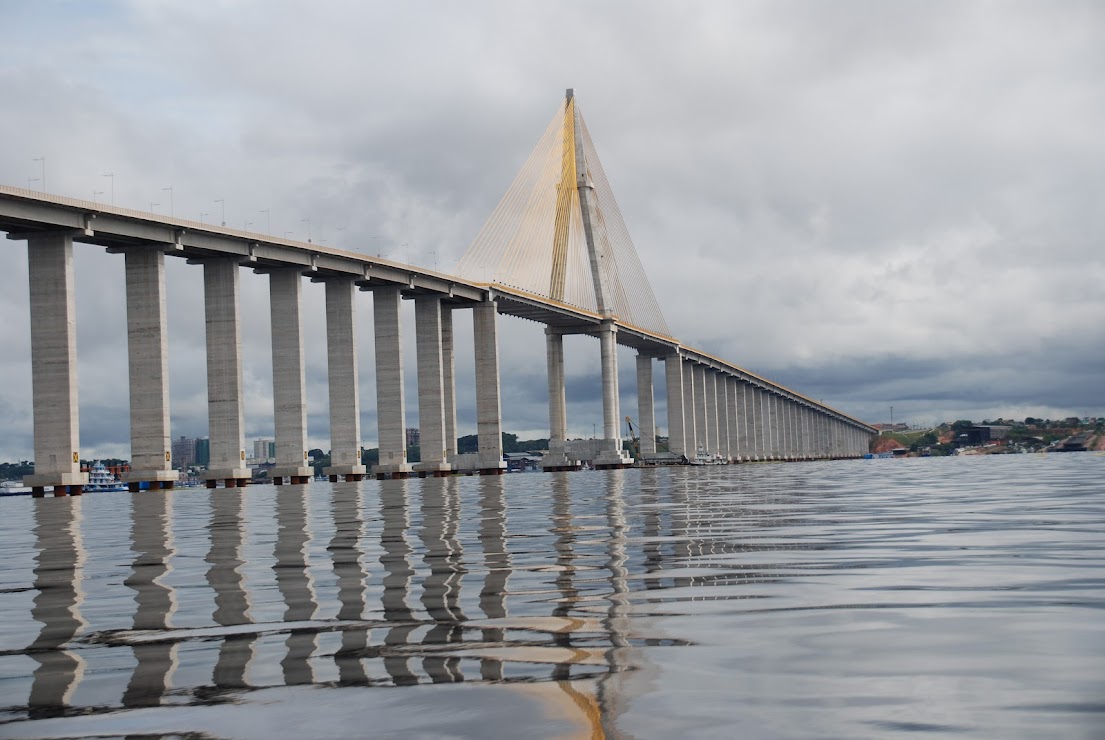| The history of the European colonization of Manaus began in 1669 with the building of a fort in rock and clay, with four cannon guarding the curtains. The Fort of São José da Barra do Rio Negro was built to ensure the predominance of Portugal in the region, especially against the invasion of the Dutch, at that time headquartered in what is today Suriname. The fort held that function for more than 114 years. Next to the fort there were many indigenous mestizos, who helped in its construction and began to live in the vicinity. The population grew so much that in 1695, to aid catechism, the missionaries (Carmelite, Jesuit, Franciscan) resolved to erect near the fort a chapel dedicated to Our Lady of the Conception, which in time became the patron saint of the city. The Royal Charter of March 3 of 1755, created the Capitania of Sao Jose do Rio Negro, with headquarters in Mariuá (now Barcelos), but the governor Lobo D'Almada, fearing Spanish invasions, the seat went back to the bar in place of 1791, being located at the confluence of the rivers Black and Amazon it was a strategic point. On November 13 of 1832, the place of the bar became the category of town with the name of the town of Manaus and on October 24 of 1848, with Law 145 of the Provincial Assembly Paraense, acquired the name of the Bar of the City of Rio Negro. On September 4 of 1856 the governor Herculano Ferreira Pena finally gave him the name "Manaus". The Cabanagem was the revolt in which blacks, Indians and mestizos protested against the political elite and took power in 1835. The entry of the High Amazonas (Manaus today, which was the cradle of the city in the Western Amazon) in Cabanagem was crucial for the birth of the current state of the Amazon. | |
|
During the period of revolution, the Cabanos of the High Amazon, bands of rebels, roamed throughout  the region, and in most settlements their arrival was greeted by the non-white population's spontaneously joining their ranks and there was a greater number of adherents to the movement. With that there was an integration of people surrounding thus forming the state, thanks to Cabanagem. the city was built because of the rubber trees. Manaus was at the center of the Amazon region's rubber boom during the late 19th century. For a time, it was "one of the gaudiest cities of the world" One historian has written, "No extravagance, however absurd, deterred" the rubber barons. "If one rubber baron bought a vast yacht, another would install a tame lion in his villa, and a third would water his horse on champagne." The decadence extended to a grand opera house, vast domes and gilded balconies, and marble, glass, and crystal, from around Europe. The opera house cost ten million (public-funded) dollars, but its foolhardiness was demonstrated by the death by yellow fever of half the members of one visiting opera troupe. The opera house, called the Teatro Amazonas, still exists today; it has been restored, was used in the Werner Herzog film Fitzcarraldo, and after a type of interlude lasting almost 90 years, presents operas once again. When the seeds of the rubber tree were smuggled out of the Amazon region, Brazil lost its monopoly on the product and Manaus fell into poverty. The rubber boom had brought electricity to the city before it arrived in many European cities, but the end of the rubber boom made the generators too expensive to run, and the city lost artificial lighting for years. Today's sprawling city of 2 million inhabitants has been generated, so to speak, to a large extent by the duty-free policy that began in the 1950s.The declaration of a duty free zone in Manaus added to the economic prosperity of the city. the region, and in most settlements their arrival was greeted by the non-white population's spontaneously joining their ranks and there was a greater number of adherents to the movement. With that there was an integration of people surrounding thus forming the state, thanks to Cabanagem. the city was built because of the rubber trees. Manaus was at the center of the Amazon region's rubber boom during the late 19th century. For a time, it was "one of the gaudiest cities of the world" One historian has written, "No extravagance, however absurd, deterred" the rubber barons. "If one rubber baron bought a vast yacht, another would install a tame lion in his villa, and a third would water his horse on champagne." The decadence extended to a grand opera house, vast domes and gilded balconies, and marble, glass, and crystal, from around Europe. The opera house cost ten million (public-funded) dollars, but its foolhardiness was demonstrated by the death by yellow fever of half the members of one visiting opera troupe. The opera house, called the Teatro Amazonas, still exists today; it has been restored, was used in the Werner Herzog film Fitzcarraldo, and after a type of interlude lasting almost 90 years, presents operas once again. When the seeds of the rubber tree were smuggled out of the Amazon region, Brazil lost its monopoly on the product and Manaus fell into poverty. The rubber boom had brought electricity to the city before it arrived in many European cities, but the end of the rubber boom made the generators too expensive to run, and the city lost artificial lighting for years. Today's sprawling city of 2 million inhabitants has been generated, so to speak, to a large extent by the duty-free policy that began in the 1950s.The declaration of a duty free zone in Manaus added to the economic prosperity of the city. |
See Also:
You have read this article with the title
. You can bookmark this page URL http://oinsweden.blogspot.com/2012/03/history-of-manaus-history-of-european.html. Thanks!
Write by:
AN -
Thursday, March 8, 2012





.jpg)




Comments " "
Post a Comment